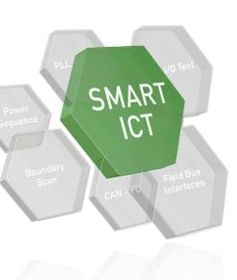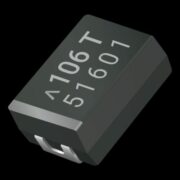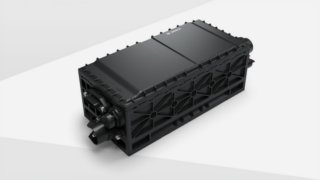Manufacturing companies are always looking for savings potential without sacrificing quality. ProMik® has developed Smart ICT to enable just this in the field of industrial production. The core function of Smart ICT replaces a wide range of conventional in-circuit test (ICT) applications. Taken as a whole, the system can contribute to significant cost savings at different levels.
In-circuit testing is still a fixture of a large number of manufacturing processes for electronic components. The test procedure remains indispensable, even if it takes up a lot of time – especially at high cycles. Fluctuating framework conditions, new technologies, and increasing demands pose major challenges for manufacturers of electronic components, but also open up new opportunities. This is what inspired the team of ProMik® GmbH to come up with the Smart ICT principle, which will particularly benefit customers in the automotive industry and industrial automation serviced by ProMik®.
Quality standards of supplied components have increased gradually, and as a result, conventional ICT is no longer strictly necessary to check these in many cases. Applications with compact dimensions and the associated reduction of test pads on the boards (PCBs) represent a major problem. Direct component testing is no longer possible, which will lead to a significant increase in the importance of indirect testing methods in the future.
In view of the global competitive pressures and the steadily decreasing prices of electronic products, the importance of innovative test solutions – and the associated potential for cost savings – might increase for many market players.
When developing the Smart ICT concept, ProMik® focused on precisely these challenges customer face, designing a product that aims at maximizing the savings potential at consistently high quality.
In conventional production flows, programming (flashing) of the components and the subsequent function test take place after ICT. Smart ICT integrates these processes, in addition to flashing. The Smart ICT thus combines a large number of test functions from the ICT and function test process, which can be carried out at the PCB panel level in parallel to initial flashing. This considerably reduces the efforts required for the ICT and function test and consequently significant optimizes the cycle time. Reusable and freely configurable test libraries, flexible control options, and the basic principle of parallel test functions contribute to greater efficiency of the overall process. Separate processes, such as ICT and FCT, can be completely integrated into the flash process in a perspective manner.
Additional functionalities such as boundary scan, field bus communication tests, and microcontroller self-tests expand the test spectrum offered by Smart ICT.
The special property of Smart ICT to map the specific test functions indirectly via the microcontroller, as well as its programming and debug interfaces, makes it particularly interesting for small components, such as key applications with few or no further test pads.










